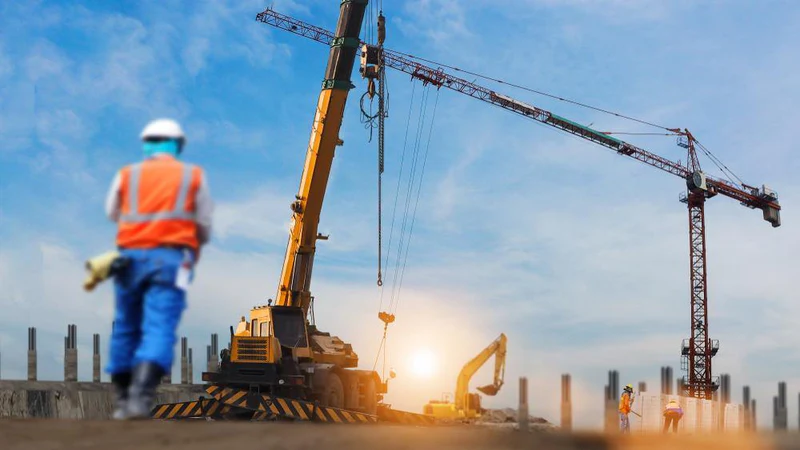Augmented reality (AR) is reshaping the construction sector by enabling new levels of safety, quality control, and efficiency. It has the potential to transform the way construction projects are conceived, constructed, and managed, from visualization to training.
AR technology can make construction sites more productive, inventive, and safe for employees. Using AR for data centres’ construction is one of the most prominent and complex applications of this technology.
In this article, we’ll take a look at the popular uses of AR in the construction industry. But before that, let’s brush up on some basics.
What is AR?
AR stands for augmented reality. A computer system that can merge the actual environment with computer-generated data is known as augmented reality. Using this technique, virtual objects are seamlessly mixed into real-time imagery.
Virtual models may be animated and replicated. We can design and mix animated sequences to control a virtual item and share the interaction with others using this technology.
How can AR be used on construction sites?
AR is a fast-developing technology with the potential to change the way we work and live. AR is making its way into a variety of areas, from gaming and entertainment to healthcare and education. AR is especially promising in the construction industry, where it may be utilized to enhance safety, productivity, and quality control.
Construction is a complicated and demanding industry that encompasses a broad variety of duties, from planning and design to excavation and construction. Workers encounter a range of dangers and risks during the operation, including falls, electrocution, and equipment failure.
With AR, workers can have access to real-time information that will help them prevent accidents and work more effectively if AR technology is integrated into the building process. Let us take a quick look at all the benefits.
Envisioning completed structures
Visualization is one of the most important advantages of AR in building. AR may be used to produce 3D models of structures or construction projects that can be superimposed on real-world settings.
This enables architects, engineers, and construction workers to view how the completed building will appear in situ, assisting them in identifying any faults or design flaws before construction starts. This may save time and money while also improving the overall quality of the building project.
Boost construction site safety
AR may also be utilized to increase building site safety.
Workers, for example, may wear augmented reality glasses that display real-time safety information such as danger alerts, emergency procedures, and safe work practices. This may help reduce construction site accidents and injuries, lowering the likelihood of workplace incidents and enhancing worker health and well-being.
Hands-on training
Training is another advantage of AR in construction. AR may be utilized to deliver interactive, hands-on instruction on equipment operation, safety procedures, and other critical subjects to personnel. This may help new employees learn faster and increase overall productivity.
AR training may also be tailored to each employee’s unique requirements, enabling them to learn at their own speed and in the most effective method for them.
Track real-time progress
AR may also be used to follow construction project progress in real time, providing managers with up-to-date information on project timeframes, resource allocation, and budgeting. This may assist in guaranteeing that projects are finished on schedule and within budget, while also enabling management to make necessary modifications to keep the project on track.
Strict quality control
Augmented reality may also be utilized to enhance quality control on building sites.
AR may be used to superimpose virtual models on real-world constructions, enabling employees to compare the actual construction to the design plans and spot any differences or quality concerns. This may help guarantee that the finished product meets the highest quality and craftsmanship requirements.
What are the types of AR devices used in construction projects?
The following are the most common kinds of AR devices used in the construction industry.
Portable AR devices
Handheld AR devices like tablets and mobile phones are widely used in the construction industry. They have cameras and display panels that enable them to superimpose digital data on their physical environment.
Workers may use portable AR devices to access construction plans, 3D models, and other digital data, as well as take images and videos of construction sites for analysis and documentation.
Smart glasses
Smart glasses are a popular kind of augmented reality device in the construction industry. They have a camera, microphone, and display screen that allow them to superimpose digital information onto their real-world environment.
Smart glasses enable construction workers to review blueprints, 3D models, and other digital data in real time, enhancing communication, collaboration, and accuracy.
Head-mounted displays
HMDs have the appearance of smart glasses, but are worn on the head like a helmet.
They are designed to provide personnel with a hands-free AR experience, allowing them to access digital information and navigate construction sites without having to carry a tablet. Those who must use their hands, such as electricians and plumbers, benefit greatly from HMDs.
Sensors
Wearable sensors are another kind of AR technology used in the construction industry.
These devices, which may be worn on the body or attached to tools and equipment, provide real-time data on employees’ actions, location, and performance. This data may be used to improve building operations, promote safety, and reduce errors and delays.
Construction drones
Drones are becoming increasingly popular as augmented reality devices in the construction industry.
They feature cameras and sensors that can capture overhead photos as well as data from construction sites. Construction workers may utilize drones to monitor progress, inspect difficult-to-reach areas, and discover potential hazards.
Conclusion
AR’s potential in construction is boundless. Workers can gain real-time information by incorporating AR technology into the construction process, which can help them work more effectively, minimize the chance of accidents and injuries, and enhance the overall quality of the construction project.
As AR technology advances, we should expect to see even more fascinating and novel uses of this technology in the construction industry.




























































